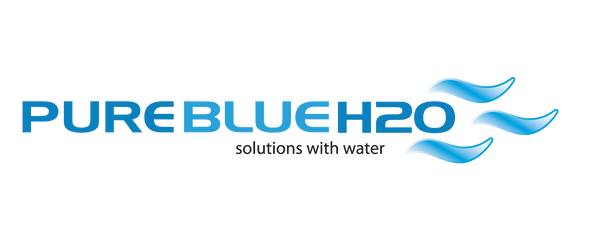How Does An Under sink Reverse Osmosis Filter Work?
Below is an illustration of a 3 stage under sink reverse osmosis for home works. 3 stage under sink reverse osmosis filter means it has three main treatment devices. In this case, there are two carbon block filters as well as a reverse-osmosis membrane.
Here is a step-by-step explanation of how it works.
- Pretreatment. Tap water from the cold water faucet pipe is tapped into the Prefilter port (Inlet). This connection is located just below the Prefilter(Inlet) label. The prefilter vertical canister is made up of a high-quality carbon block filter that removes chlorine/chloramine as well as other miscellaneous chemicals. This filter protects the membrane from disinfectants.
- Shutoff system. The prefilter canister's back contains the treated water. A 1/4" tube loops around the unit, where it enters an Auto Shutoff valve. The Shutoff Valve, which is the device that clips to the top of the horizontal membrane housing's roof, is the round device. It makes a horseshoe turn in the Shutoff Valve and exits through the 1/4 inch tube. This tube takes it to the right side of the Membrane Housing. [More about the Shutoff System and its functions later.]
- The Membrane. This membrane is found in the horizontal housing labeled Membrane. It screens out contaminants such as fluoride, lead, and chromium. The membrane divides the water it treats into two streams.
- The Drain Water. Two, also known as the brine or concentrate contains the concentrated minerals and metals that have been rejected. The "drain line" is located at the extreme left of the unit. This is where the rejected water goes. The drain line connects with a special clamp, called a drain saddle, that is located under the sink drain. Two cigar-shaped appendages are located in the drain line. They serve two purposes: a flow restrictor (above), and a check valve. The flow restrictor regulates how much water drains. The flow restrictor limits drain flow to a small stream, which is adjusted to meet the membrane's drain flow requirements. The check-valve is another device. It's a one-way valve. It allows water to flow towards the drainpipe, but it prevents it from flowing backward toward the RO membrane. It prevents backflow from the RO unit in the case of a blocked drainpipe. [Note: Many RO units don't have a drain pipe check valve. The flow restrictor is an even smaller piece that is attached to the fitting that connects the drain line and membrane housing.
- Product Water. This is the water that you will drink. It enters the Auto Shutoff valve's left side via the tube near the drain line. The check valve prevents water from being pushed back into the membrane canister by preventing pressure from the storage tank. This tiny check valve is vital for the proper operation of your unit. [Instead of the external check valve shown in the photo, most RO manufacturers use a small check valve that is installed into the fitting at where product water leaves the membrane container.]
- Revision of the Shut-off System. Filtered tap water flows through the shutoff valve's right side on its way to the membrane. The shutoff valve's opposite side allows the permeate water (product) to pass through the shutoff valve. It then travels to the Tank Line Tee.
- Tank Tee. This tank tee acts as a fork in the road. Water follows the path of least resistance and, when it reaches the tank tee, it either goes to the pressure tanks or the inlet at the back of the post filter. The tube connecting the tee to the storage tank is used as an entry point and exit. Depending on the pressure, water flows either into the storage tank or toward the tank tee.
- The Storage Tank. The under sink reverse osmosis filter membrane slows down water processing, resulting in a small stream or a drip. A light air charge is used to pressurize the tank. The storage tank is filled with water. Water is stored in a flexible bladder and is pushed out of the storage tank by air pressure when it is needed.
- The post filter. This final filter connects to the sink top's dispensing spigot with a single 1/4 inch tube that plugs into a Post Filter (Outlet). The Post Filter, a carbon block filter of high quality that polishes the taste of water as it passes through it on its journey to the spigot, is made from high-quality carbon blocks.
- The Delivery and Shutoff System. If the spigot is on the sink and the unit makes water, the product water will not have a place but to go into the storage tank. The tank fills and exerts pressure on the shutoff valve's left side. The pressure in the tank should reach about 2/3 of the incoming water pressure. This pressure closes the piston, which prevents water from entering the unit. The unit is turned off until there is a demand for water. (Opening the spigot will release pressure on the left side). If the spigot is opened, water flows out of the tank through the tank tee and through the post filter.
Why Choose Us?
Pure Blue H2O has been around for many decades and can provide easy solutions to any water problems in your home. There are many products available, including 3 stage reverse osmosis filter system, 4 stage reverse osmosis filter system, RO filter replacement, countertop water filtration systems, and more. Our company is customer-driven and has a passion to save lives from water-borne illnesses. All water products are designed, engineered, assembled, and manufactured in our laboratories. They can be customized to meet your specific needs. If you have problems with your water filtration or if your water is not being cleaned properly, please contact us today!

